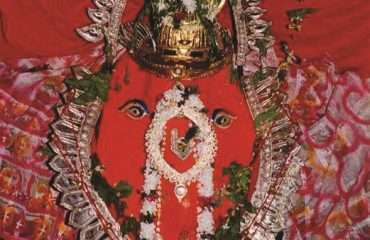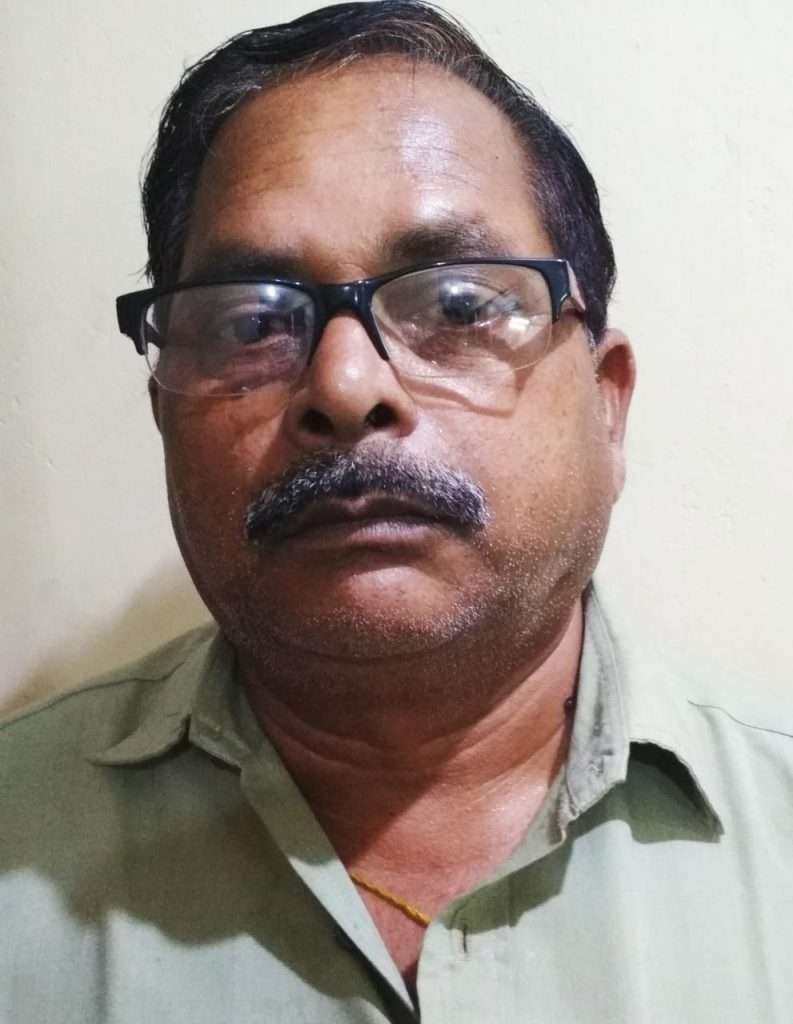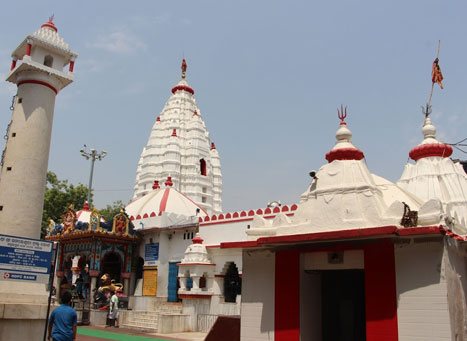Ever since Balaram Dev, the first Chauhan king of Sambalpur built the Samaleswari temple in the second half of the sixteenth century. Dussehra Puja is being celebrated in the Samaleswari temple from the day of Mahalaya to the Dasami, known as Vijaya Dasami.
Prior to Balaram Dev, the Goddess Samaleswari was worshipped under a Semel Tree. Samaleswari was the Ista Devi of the original inhabitants of Sambalpur district. When Balaram Dev became the king of Sambalpur he accepted Samaleswari as his Ista-Devi.
It is said – Samaleswari was the Lanka Devi who was guarding the city of Lanka of Ravana in Tretaya yuga. So devotees were singing one bhajan:
Lankara Devi maa go
Lankeswari Naama
Nirjana bane, maa go kalubishrama
Samata drustire sabhinki chahin,
Tenu to naama ate Samalei.
‘O maaSamaleswari,
You were the Lankeswari,
guarding the fort of Ravana
in the treta yuga.’
(After leaving Lanka, you took shelter in deep forests. You look to all your devotees with equal gesture (Samana drusti). That’s why your name is Sample.)
At that time also Samaleswari was worshipped in the month of Dussehera (the month of Aswina). But we have no concrete information of that time.
But after Balaram Dev, Shakti Upasana in Samaleswari Temple became an annual event with sincerity and enthusiasm. Aswin month in the Autumn season is very dear to Goddess Samaleswari.
It may here be mentioned that in Vedic times, the autumn season (Sarad Ritu) is the best season among the six seasons. An example of this is –when elderly people bless the younger ones by saying– Sata Sharadiya bhaba (You live hundred autumn seasons).
So, autumn is the best season even now. The rainy season has gone, winter is yet to come. So, it’s a neither hot nor cold season. It is comfortable. Moreover, the peasants are happy that they are likely to harvest a good crop. So, in this jolly and amusing atmosphere, Maa Samaleswari is worshipped in her temple not only by the temple priests but by the general public.
And it is a coincidence that during the month of Dussehra, women are much respected. Bhai juntia and Puo Jauntia is two important bratas (rituals) of women for wishing the best of luck to their sons and brothers. Dussehra is the month of women, whether it is mankind or Goddess.
The ten-day long Dussehera festival in Samaleswari temple is a glamorous affair. The temple and its adjoining roads are decorated with attractive lights of Lichu bulbs. The atmosphere looks festive. The people are out to enjoy the festival once in a year with Hindu – like devotion – as if their own mother is being worshipped. The temple is replete with rituals every day.
On the day of Mahayala (Dussehera Amavasya), Samaleswari takes the form of Ganga (Dhabala-Mukhi). On other days Samaleswari is red-colored. Then during Navaratra, Devi is worshipped in nine different forms. During this Navaratra – A military procession is also demonstrated. It is called Rana jeeta Sobhajatra.
It reminds the ancient glory of warfare. It is also called ‘Aakhada’. This is very entertaining and surprising. In the precincts of the temple, mock fighting and acrobats are demonstrated during night time. On the day of Dasami, the festival ends.
But on the day of Kumara Purnima (Dussehera full moon), the old pataka of the temple is replaced by a new one and Samaleswari is worshipped in Rajarajeshwari vesa. During Navaratra earthen lamps are lit for the fulfillment of one’s desires and amelioration of sorrows of this mundane life.
In the religious life of the people of Sambalpur district, Samalei occupies a pivotal position. As said earlier Samalei is worshipped under a Semel tree in the form of a stone in the vicinity of every village.
J. D. Beglar, a British archaeologist, opined that Samalei appears to be an unembodied divinity and is widely believed in, in not only Sambalpur district but in the entire region.

Goddess Samalei was mentioned as witness in the copper plate grant of Jayanta Singh, which is dated at 28th April, 1790 AD. Samalei is said to have destroyed Kalapahar, the Muslim general of Suleiman Karrani of Bengal, who had come to attack Sambalpur. But Kalapahar met with his nemesis in Sambalpur.
So, the people of Sambalpur revere Samalei. Samalei is their protector and nourisher. The famous poet of Sambalpur, Late Gangadhar Meher prayed to Samaleswari and said:
Jagatare jaha achhi sabu tora sina
ki dei pujibi pade prema bhakti bina
(Whatever is there in this world, all is yours. So what can I give you except love and devotion.)
Indeed, Samaleswari may be an unembodied divinity; but she is the embodiment of kindness, compassion, and power. So we must worship her not only in Dussehra but every moment.
(The views expressed are the writer’s own.)

Radhakanta Seth is an Income tax officer in Sambalpur. He is a freelance writer and his articles have been published in some Oriya dailies like Sambad, Samaj, Dharitri, and English dailies like The Telegraph and in a sociological journal ‘Folklore’ published from Kolkata.
He can be reached at [email protected]

